Himalayan Bees: Their Honey Induces Hallucinations, and Their Hives Are the Size of a Human! (17 photos)
Bees in the Himalayas are something hard to imagine on our planet. Giant insects the size of a thumb, they live in numerous colonies on the vertical mountain slopes, their door-sized hives hanging in clusters next to each other. 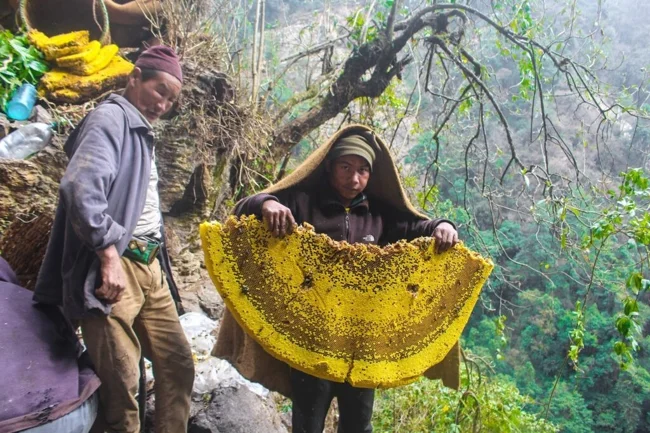
However, despite their size and terrifying appearance, local residents risk their lives to collect a little honey from them. After all, the honey the bees collect in early spring... Let's just say it can take you on a fascinating journey into the depths of the subconscious. 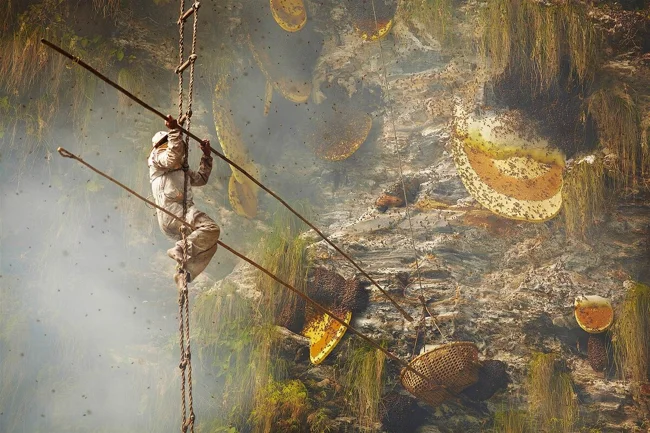
Ready to send the sufferer to the spirit world. Mentally. And physically too!
As is customary with normal bees, the formation of a new hive begins with the queen and her small retinue building a new home. This is where any normality in the Himalayan bees ends. After all, these workers are mini-helicopters, up to 3 centimeters long, building hives at altitudes of 2,500 to 4,100 meters, right on cliffs! These hives are completely invulnerable to attacks by ground animals, and thousands of fighting bees with enormous stingers protect them from fliers. 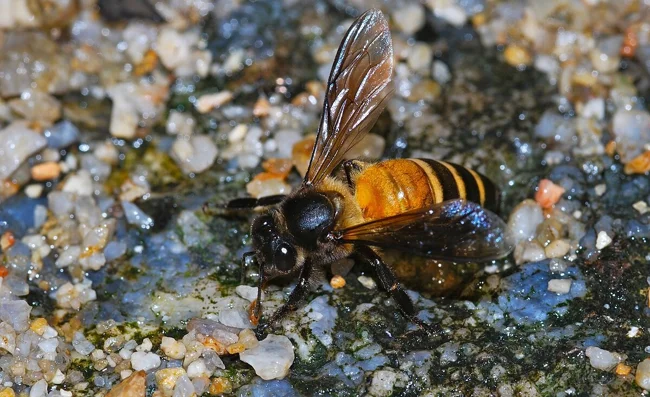
This character looks more like a hornet... 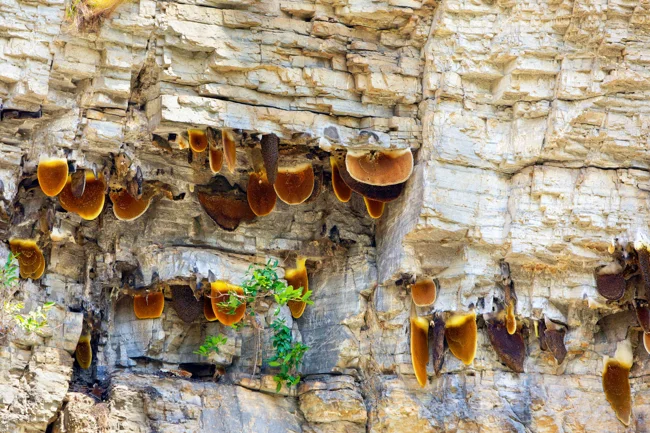
Ordinary bees avoid such dense housing. But we've already mentioned that the heroes of this article are special insects.
The hive itself also looks very unusual. The entire bee nest is one large comb hanging from the ceiling, enough to hide a person. And that's no exaggeration: the honeycomb can reach 1.5 meters in width and 2 meters in height. The enormous nests of giant bees can hold up to 60 liters of watery, fermentable honey. This isn't a very high-quality product by beekeeping standards, but even to obtain it, the bees have to vacuum the surrounding area throughout the entire flowering period. And in the Himalayas, this lasts from early February to late November! 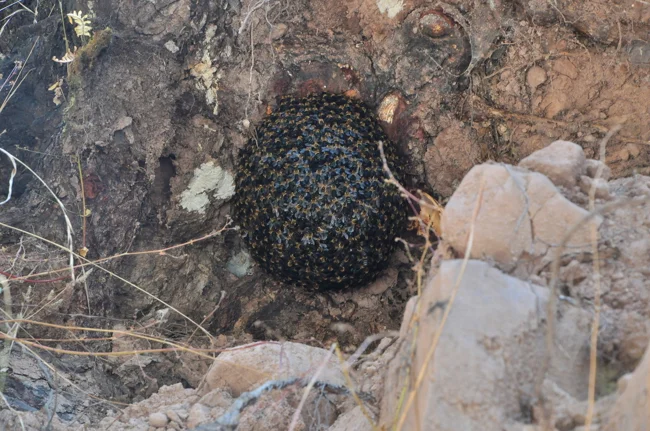
In winter, Himalayan bees, unlike ours, do not hibernate directly in the nest. They descend to an altitude of 1,000-1,500 meters and hide under rocks and tree roots. As soon as the air begins to warm, they return.
Over the course of a year, Himalayan bees produce several types of honey, the taste and composition of which differ due to the different types of flowering plants from which the insects collect nectar. And the earliest of these, red honey, is extremely popular among the locals. After all, this honey is toxic, dangerous, and has a psychedelic effect! 
It's called crazy honey.
Bees collect red honey from flowering rhododendrons, whose nectar contains andromedotoxin. This poison is harmless to bees, but in vertebrates, it depresses the nervous system, leading to tachycardia, paralysis, and death. Although the toxin content in honey is relatively low, it is sufficient to cause poisoning from the very first ingestion. 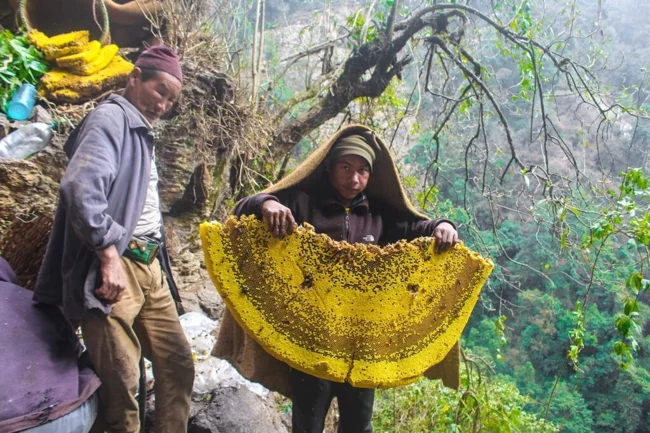
Hello, I'm selling a one-way ticket. 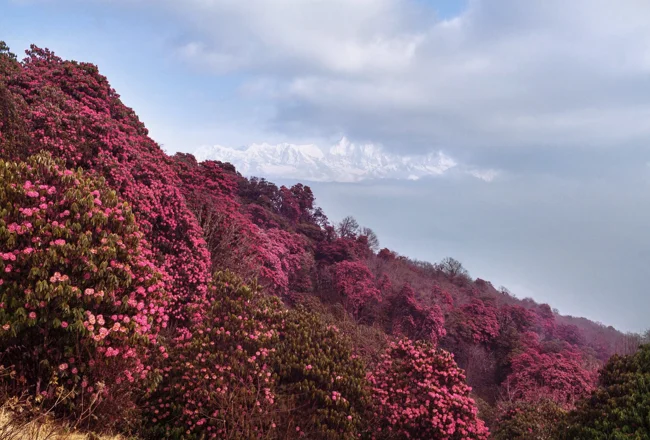
For Nepalese, rhododendrons are practically their national plant. They highly respect them for their beauty and resistance to mountain conditions, so they plant them at every opportunity.
Yes, you heard it right: honey is so popular because people love to poison themselves with it. The nuances lie in the symptoms of mild toxin poisoning. In addition to a whole host of unpleasant sensations—such as intense salivation and weakness—the person experiences powerful hallucinations. Under the influence of the poison, a person sees visual hallucinations of various forms—from glowing circles to familiar images—people, animals, and combinations thereof. Hallucinations are accompanied by a clouding of judgment, with all its attendant quirks, such as inadequacy, loss of control, and a breakdown in cause-and-effect relationships. Taken together, they create an absolutely unforgettable, terrifying sensation. While under the influence of honey, a person doesn't experience euphoria, but anxiety and fear can be overwhelming. After 12-24 hours of hallucinations, a severe hangover awaits. However, despite the downright disgusting sensations, there are always extreme drug addicts willing to fork out a tidy sum for red honey. 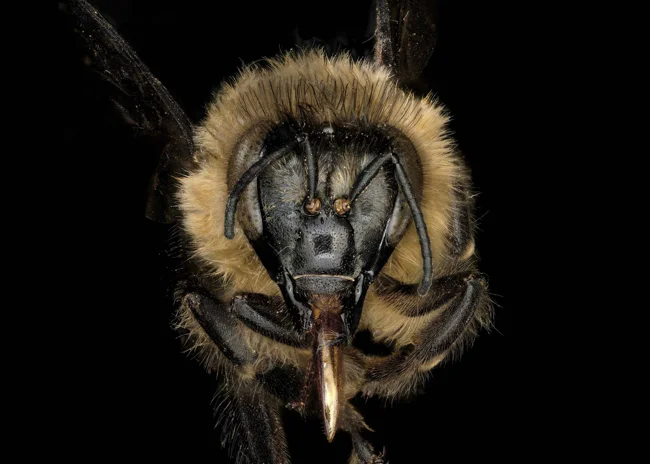
Here it is, the face of a hallucinogen supplier!
Therefore, locals have built a crude and extremely harsh industry around harvesting honey from giant bees. They smoke the bees with fires, then climb tens of meters up sheer cliffs using rope ladders with wooden rungs. Without safety nets or any protection. The resulting honey is incredibly expensive, averaging $1 per gram, but the main profit goes to the red honey traders. Mountaineering beekeepers, on the other hand, earn just enough from this deadly, dangerous trade to feed their families. 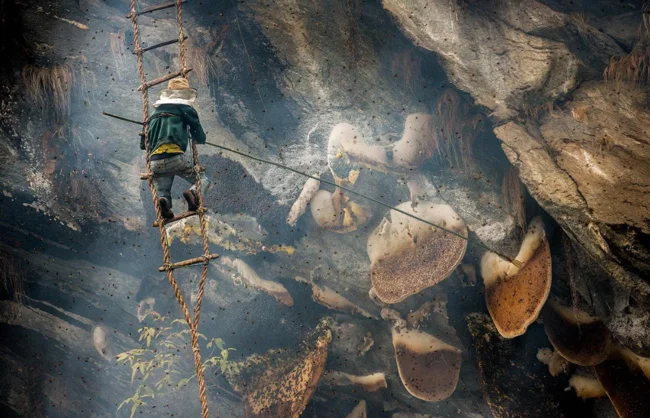
The work is hard. But the pay is low! 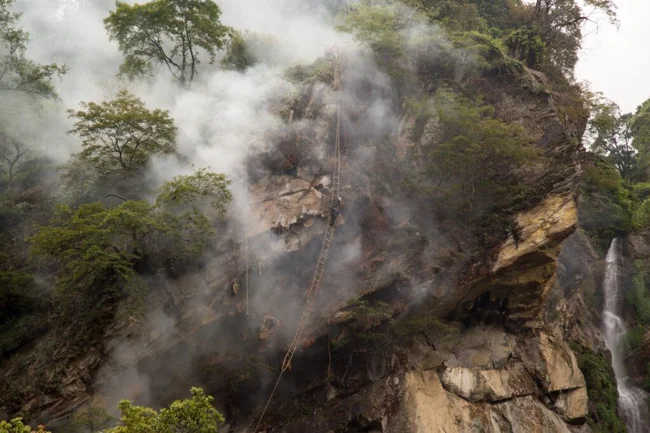
Looks safe. 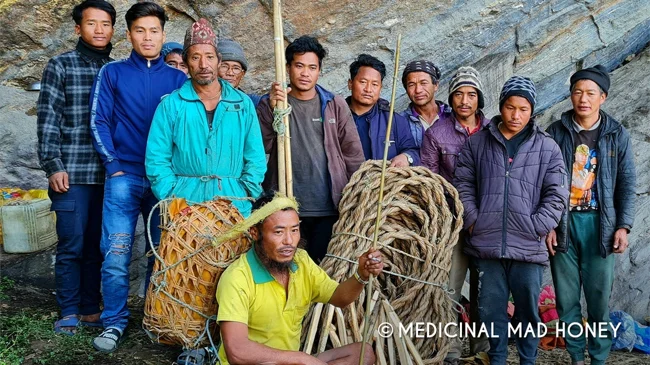
A Nepalese honey-harvesting team. Incidentally, they harvest more than just red honey. Regular honey from Himalayan bees also has an unusual flavor and is well-suited for making alcoholic beverages.
And in recent decades, this profession has been slowly dying out. Partly due to unbearable working conditions, but that's not the main reason. The fact is, the Himalayan bee population is gradually declining due to deforestation, climate change, and ubiquitous pesticides. This, in turn, is harming the harvests of many wild plants. Perhaps this is for the better. People will be less likely to be poisoned, and left alone, the bees will quietly replenish their numbers. And finally, some more beautiful photos: 
It seems this man is immortal... 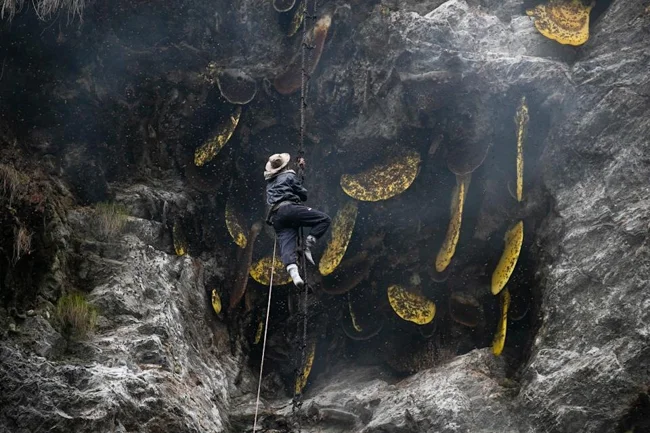
Indiana Jones returns. 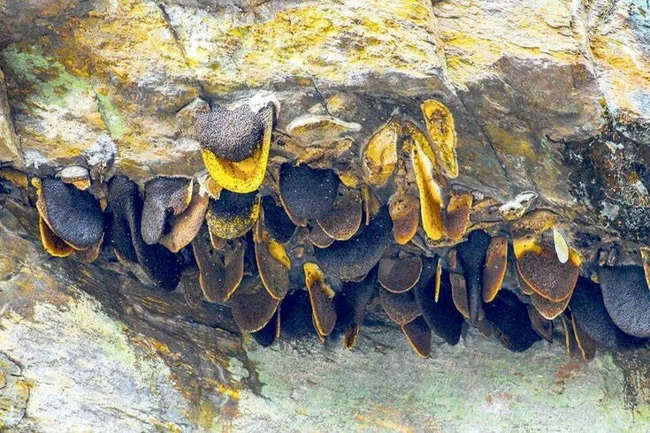
A panel apartment building in a wilderness style. 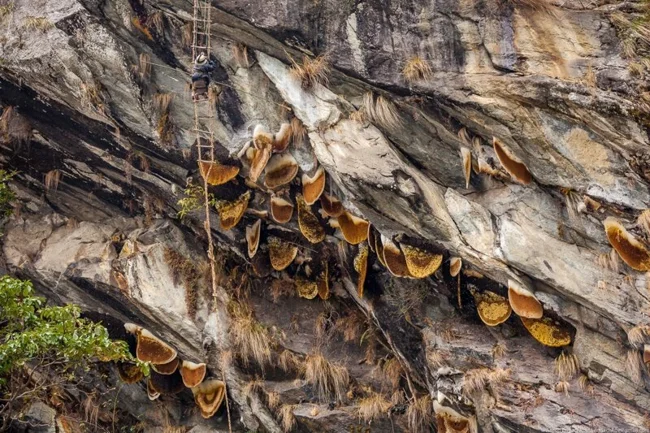
As if the mountain produces fresh pancakes! 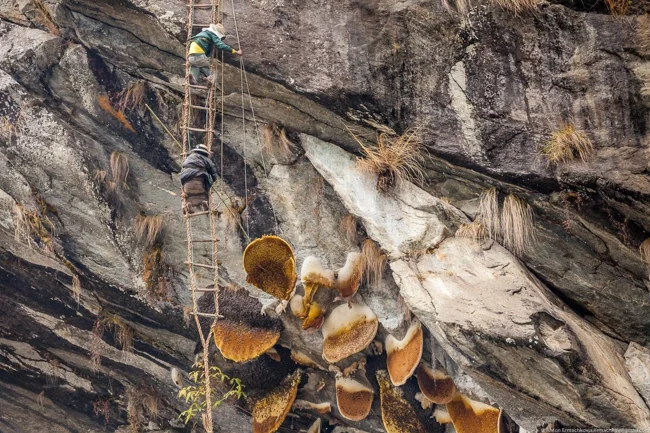
For safety, honey collectors have to knock down hives with long sticks.


























